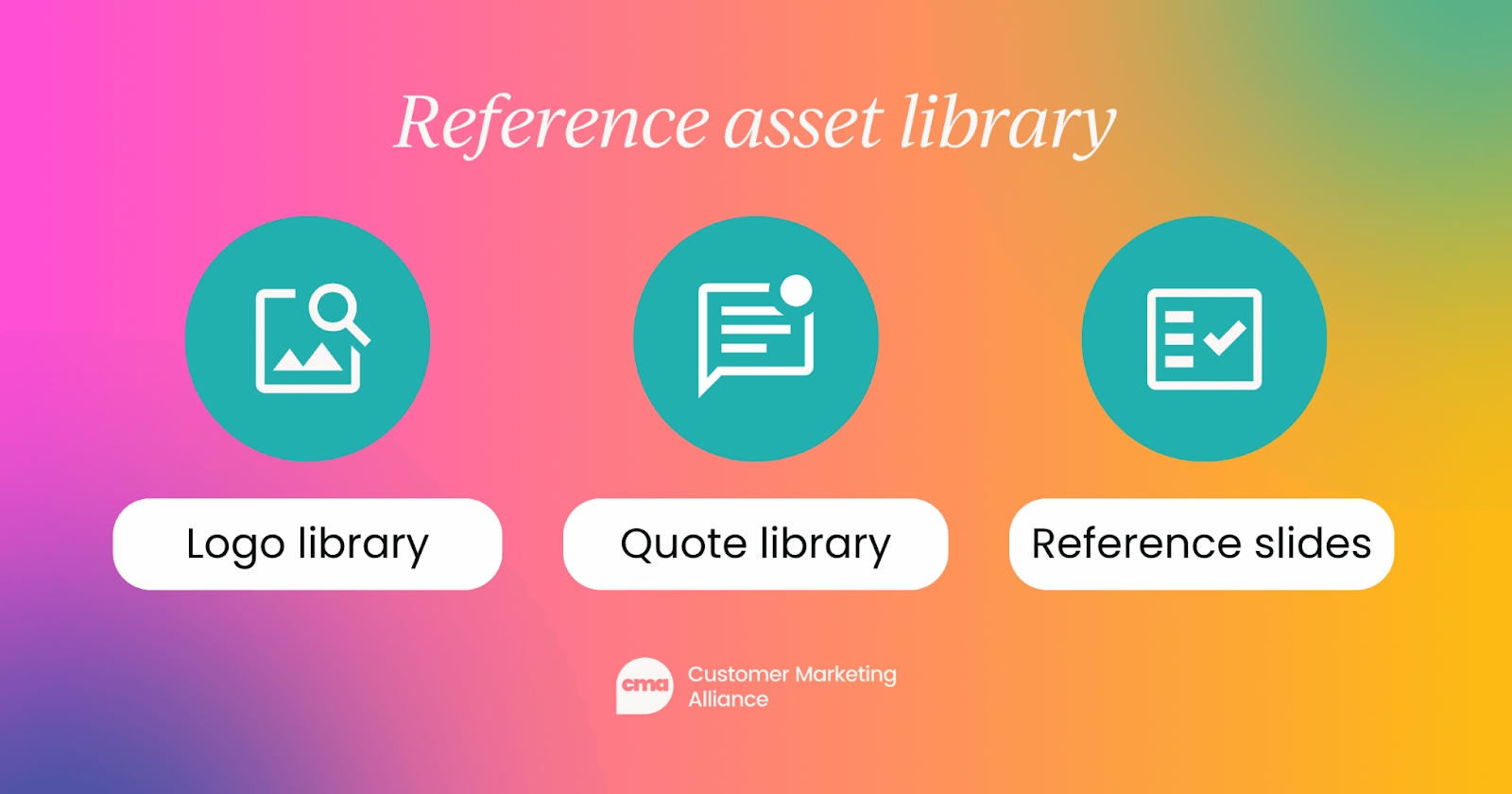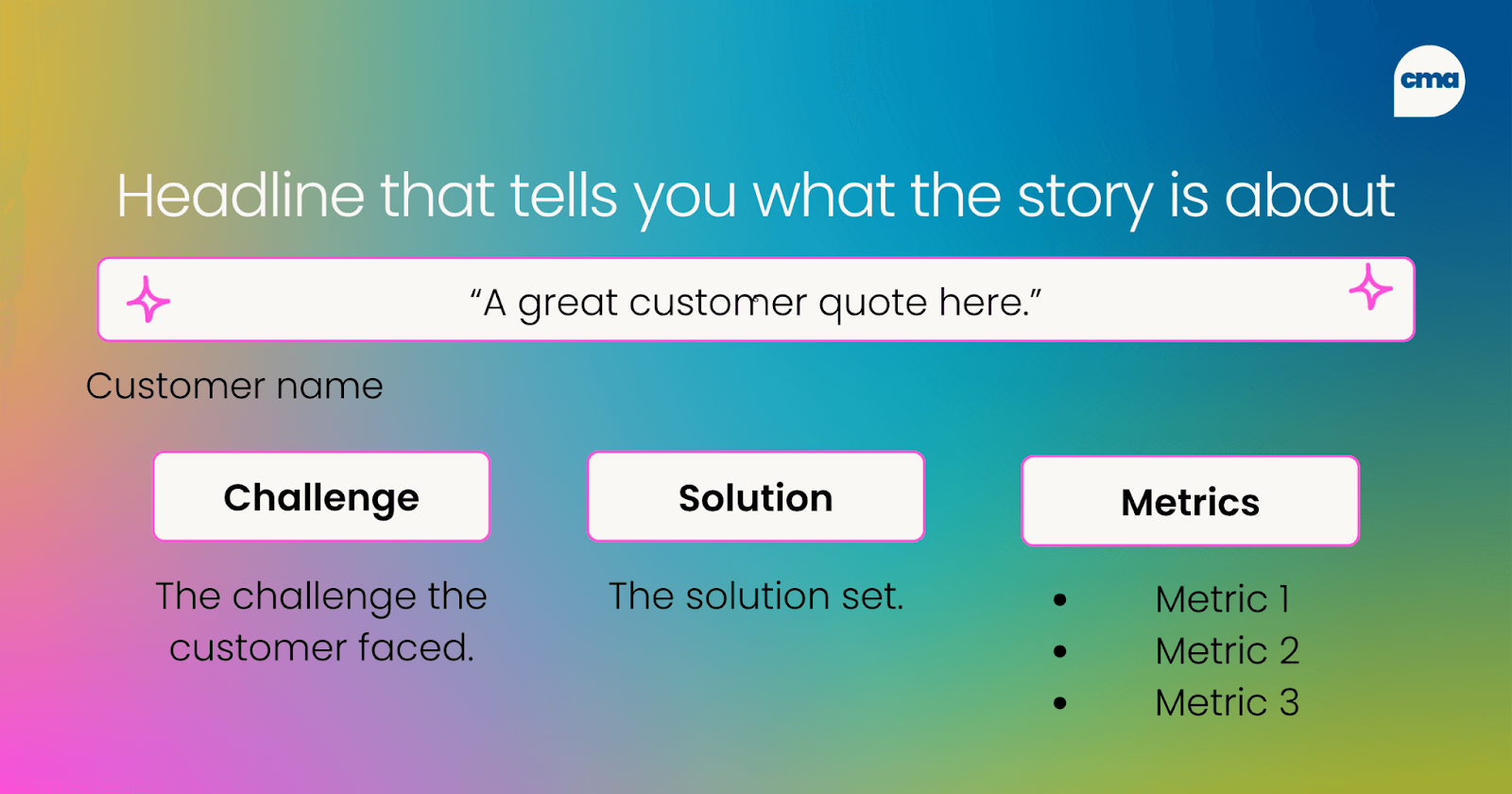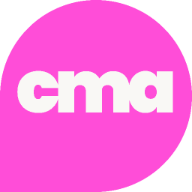Does your marketing team spend too much time focused on leads instead of what really matters: customers? That common marketing-sales dynamic can distract us from the core goal: helping sales close business.
We need to shift the conversation from simply generating leads to actively supporting the sales process through every stage. That’s where a well-structured reference fulfillment program comes in.
It’s the secret sauce that equips your sales team with the validated customer proof they need to seal the deal and turn prospects into loyal clients.
In this article, I'll walk you through the six essential components for standing up a successful, high-impact reference fulfillment program.
1. Start by listening: Find out what sales really needs
In marketing, we're really good at coming up with ideas and then throwing them at sales, saying, "Hey, guess what we've created for you!" And sales is often like, "Wait, no one talked to us about this! We're the ones on the front lines, we have ideas too."
It is absolutely critical to start with listening first. You have to understand what your sales team is actually looking for, not what you think they need. We do this in two key ways: a survey and focus groups.
Create a short and sweet survey
If you want sales to respond, you have to keep it short and sweet. Make it a simple one-pager, no more than ten questions. Having the survey come from sales leadership down to the sales team also helps with adoption.
You want to ask questions that will genuinely guide your reference program. A few we like to use:
- How do you secure references today?
- Where are you going when you need a reference?
- How do you define a reference? Is it always a call, or is it sometimes a case study, a slide, a logo, or something for an RFP response?
- At what stage in the sales cycle do you typically need a reference? That's a really important one.
Always include one open-ended question at the end so they can give you any feedback they want about their experience working with marketing on references in the past.
Conduct focus groups
We take our survey responses and then conduct focus groups. We make sure we cover all geographies and all tiers of your sales organization – from strategic accounts all the way down to SMB – so that everyone feels heard.
We just sit down with them and ask:
- Do you trust the reference content that's coming from marketing? Why or why not?
- Where are the gaps in your sales cycle now? Where are you spending time that is a waste of time for you that we could help expedite?
- What would make you feel good about offering your customers up as references?
That last point is key because you have to earn that trust with sales. They need to know you're going to take care of these customers and not overuse and burn them out.
The fear of burning out their best accounts is what leads to "backdoor referencing," where account managers just help each other out privately without involving marketing. We need to stop that and encourage sharing for the greater good.
2. Implement self-service with a reference asset library
Once you've listened and know what sales needs are, one thing that's absolutely essential is setting up a reference asset library. This is an internally accessible place where everyone can go and find a number of customer-approved reference assets.
Everything in this library must be pre-approved by customers for external use.

The logo library
The logo library is a crucial part of this. We keep individual logos but also create slides that group them, such as by:
- Industry: "Here are our approved logos in the banking industry."
- Solution-based: "Here’s everyone using our Helix solution."
We also prepare slides for internal use, like quarterly earnings calls, so our board and executives can easily pull slides showing our recent customer momentum for presentations.
The quote library
For quotes, we currently use an Excel file (but hope to mature beyond that) with quotes pulled from video transcripts or customer speakers at events. We get approval to use the individual quote and then serve it up.
Salespeople can use the quotes in a slide. Demand generation can use them in a campaign. Product marketers can put them on a landing page. The caveat is that we want to make sure the customer knows their quote is being used, so they aren't surprised to see a campaign on LinkedIn.
Reference slides
The reference slide library is the bread and butter of your reference assets. These slides are pared-down versions of case studies. Often, when a customer can’t do a public-facing case study, they can do a reference slide to be used by your sales force in presentations.
The slide itself should have:
- A great quote and the customer's name.
- A headline that tells what the story is about.
- The challenge the customer faced.
- The solution set (keep this small, focused on business value).
- Three metrics that drive home the point of the story.

The most important part of this slide is not what you see on the slide; it’s in the notes section. We write an entire talk track for how a salesperson can get up in front of a room and captivate the audience with a story that the prospect can see themselves in.
We partnered with our creative team to build out the template for these reference slides to match our corporate sales pitch deck. This way, our sales force can go to the reference library, pick the slide they want, and plug it seamlessly into their presentation.
When organizing your library, consider different hierarchies. We organize ours by geo, industry, and product.
3. Establish governance for the greater good
Governance can sound like a dirty word, but all it really is is getting everyone on the same page and building trust. If you want sales to stop doing back-door references, you have to prove you can take better care of their customers than they can.
The reference brief
The first thing to set up is a reference brief. No one wants to fill out a document, but it's vital because it allows us to properly prepare the customer who will be providing the reference on what they're walking into.
The requester fills out a very short document detailing:
- Who is asking for the reference?
- The background on why we need this call.
- Who will be on the call?
- Five to ten questions that are probably going to come up.
This allows us to not only prepare the customer but also align the right people on our side, whether a more technical or executive-level person is needed.
Engagement plans and advocate alignment
You must establish engagement plans with your most active advocates. We honor these plans. If a customer says they are only willing to do a reference call once a quarter, they get a request once a quarter, and we do not go over that.
It is also key to align deal size and brand for the best use of advocates. We had a situation at my last company where Uber was a large customer, and mid-market commercial sales with tiny deals were demanding to talk to Uber. You have to talk them off that. We have better options for them! You'll burn out those marquee customers if you don't say no.

4. Utilize reference forms effectively: one-to-many
Reference forms are my favorite thing to talk about because sales loves them.
What are they? They are not webinars meant to drive new leads. They are only for salespeople who have customers in the latter stages of the sales cycle who need to close the deal and want to talk to one of our most popular references.
We turn a one-on-one reference call into a one-to-many reference call. We use the webinar function, but we don't do a bunch of marketing around it – no heavy branding, and no SDRs/BDRs sending invites to prospects. This is an invite-only event from the account rep if you're in the latter stages of a deal.
We aim to hold one a month to give sales a steady drip of customers to point their prospects to.
The ideal reference form format
Through trial and error, we've figured out the ideal format:
- 10–20 minutes: The customer shares their experience. Sometimes it comes across as more authentic if there are no slides.
- 10–20 minutes: A subject matter expert from our company asks them planned questions that we know everyone will want to know.
- Rest of the time: Live Q&A from the audience.
If you get really bold, you can even invite analysts to the calls (with customer permission). Analysts love it; they never get that kind of raw access to customers in an environment where they can hear what the prospects are asking about.
Because we record these, we keep a library of them and leverage the heck out of that content for future reference fulfillment requests: use the quotes for the library, send the recording as a response to RFPs, and so on.
5. Measuring success in reference programs
Measurement is absolutely critical. For our reference fulfillment program, in particular, we focus on several key areas.
Key metrics for advocate performance
- Revenue influenced: The overall revenue influenced by the reference program.
- Individual advocate incremental revenue influenced: We look at an individual advocate and credit them with how much incremental revenue they've driven based on the deals closed from their reference calls. This helps us understand who our most valuable advocates are.
- Lifetime spend of an advocate: How much does a customer spend with us if they're in our advocacy program versus not?
- Response times for fulfillment: When you work with us to get a reference, are we making that process harder or less difficult for you?
Business impact and quality
We also track a few other valuable measurements:
- Deal velocity: Are deals with a reference input closing faster?
- Deal size: Are we getting bigger deals when a reference is involved?
- Quality of reference calls: We always follow up with both the salesperson ("How did it go? What did you hear?") and the customer ("What was your experience like? Was it a good match?") to make sure we're facilitating good calls and that our advocates felt prepared.
We look at the growth of the reference pool and aim to incentivize behavior that we like.
6. Tools in your tool belt
You need a few essential tools to make your reference fulfillment program run smoothly.
Dedicated human support
First, we have a simple inbox. We want our sales team to feel like there's a human behind that, not a black box. We have a dedicated person who responds, and they know her name. This is for when they need that white-glove touch to help find a customer.
We also have dedicated headcount to manage the reference asset library, which is probably where I should have started!
CRM integration and rewards
We use a tool called Influit and are integrating it into our CRM so a salesperson can go into their opportunity, say they need a reference, select from our advocates, and send a request. We control what they ask and make sure we get the necessary information, like the reference brief.
Finally, we reward those customers for doing reference calls. This shouldn't be a shock, but it was a new concept when we started at BMC. It's absolutely vital. Reference calls are one of our highest point-value activities. Advocates can earn points for swag, VIP experiences, charitable donations (for our public sector and federal customers), and training and education credits.
Managing back-door references
You cannot stop back-door references completely, so we advise: give up on trying to stop it.
Instead, if you hear about a back-door reference that happened, get visibility on it, and do the work – give the customer points and rewards. The message to sales is: "Help us help you to get your customer rewarded for their time."
The other way to stop it is by showing them what good looks like. Highlight and reward the salespeople and CSMs who are working the way you like them to. For example, we implemented a reference star program where we give a nice spiff for those who follow the process.
As they see the quality and scope of the references they get from the program, their old limited list of contacts will start to dwindle out. They'll realize they get a better, more prepared reference from us.
If you have all of these components working together, you'll be giving your sales team a competitive edge that is nearly impossible for your competitors to beat. You'll be using your customers' words to literally help expedite and seal the deal.


 9 min read
9 min read
 Follow us on LinkedIn
Follow us on LinkedIn



